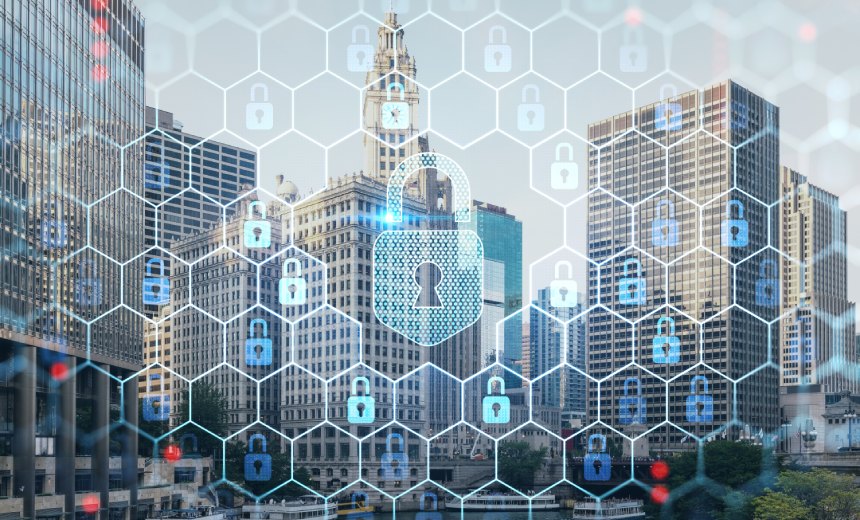How a digital design firm navigated its SOC 2 audit

One of the more intense aspects of the audit was the testing of our incident
response plan. We had to provide records of past incidents, how they were
handled, and the lessons learned. Moreover, the auditors conducted tabletop
exercises to assess our preparedness for potential future security events. After
weeks of evaluation, the auditors presented their findings. We excelled in some
areas, such as in our encryption of sensitive data and our robust user
authentication systems. However, they also identified areas for improvement,
like the need for more granular access controls and enhanced monitoring of
system configurations. Post-audit, we were given a roadmap of sorts--a list of
recommendations to address the identified deficiencies. This phase was dedicated
to remediation, where we worked diligently to implement the auditors’
suggestions and improve our systems. Reflecting on the transformative impact of
SOC 2 certification, L+R has discerned a profound shift in the dynamics of
client engagement and internal processes. SOC 2 certification transcends the
realm of compliance, fostering enriched dialogues, bolstering trust, and
catalyzing decision-making at the executive level.
Is anything useful happening in network management?

The first of these is a management take on something that's already becoming
visible in a broader way: absorbing the network into something else. Companies
have said for years that the data center network, the LAN, is really driven by
data center hardware/software planning and not by network planning. They're
now finding that a broader use of hybrid cloud, where the cloud becomes the
front-end technology for application access, is pulling the WAN inside the
cloud. The network, then, is becoming less visible, and thus explicit network
management is becoming less important. ... The second development gaining
attention is being proposed by a number of vendors, the largest being Nokia.
It envisions using "digital twin" technology, something most commonly
associated with IoT and industrial metaverse applications, to construct a
software model of the network based on digital twins of network devices. With
this approach, the network becomes in effect an industrial system, and
potentially could then be monitored and controlled by tools designed for
industrial IoT and industrial metaverse deployments.
The Basis for Business and Solution Architecture

The Business Architect, just like the Solution Architect, is a business
technology strategist. The delivery of technology driven business value is
core to their professional capability and career. So for that purpose they
share a set of skills/competencies, language, professional goals, and
experiences with each other. Any other method of architecture has been shown
to fail. Without the shared capabilities and focus the team quickly begins to
cannibalise its own value proposition to the enterprise and argue about
baseline definitions, purpose and ownership. The level of team synergy and
shared community is one of the most important first steps to a mature
architecture practice. With that in place the Business and Solution Architects
work very well together and in alignment with the EA from strategy through
execution to measured value. Business Architects must focus on program level
outcomes, those that are scoped at the business capability and/or department
or region level. These levels are where real business goals and measurements
occur and stand closest to the customer while retaining executive authority.
Is the Future of Data Centers Under the Sea?

One of the most appealing aspects of underwater data centers is their
proximity to large population centers. Around half of the world’s population
lives within 125 miles of a coastal area. Situating data centers near coastal
population centers would allow for lower latency and more efficient handling
of data. This would increase speeds for various digital services. Perhaps
counterintuitively, the servers themselves might also benefit from being
dropped in the drink. The inert gases and liquids used to fill underwater data
centers are less corrosive than ambient air, leading to longer lifespans for
the equipment. The servers are also protected from possible human damage
incurred by everyday movement -- people banging into them, dropping them, or
accidentally unplugging them. Placing a data center pod or retrieving it for
maintenance is fairly simple, according to Subsea Cloud’s Williams. “Let's say
the water is 100 meters deep. It's just an hour an hour job. If it’s 3,000
meters deep, it will probably take five or six hours to get the pod down.”
What you don’t know about data management could kill your business

Contributing to the general lack of data about data is complexity. There are
many places in the enterprise where data spend happens. Individual business
units buy data from third parties, for example. Taking enterprise-wide
inventory of all the data feeds being purchased and getting an accurate
picture of how all that purchased data is being put to use would be a good
first step. The reality is that a significant portion of the data sloshing
about modern enterprises is replicated in multiple locations, poorly
classified, idiosyncratically defined, locked in closed platforms, and trapped
in local business processes. Data needs to be made more liquid in the way of
an asset portfolio — that is, transformed to ease data asset reuse and
recombination. ... Traditionally business schools have avoided data as a
topic, pumping out business leaders who erroneously feel that data is someone
else’s job. I recall the mean-spirited dig at early career Harvard Business
School alums expecting their assistants to bring in the day’s work arrayed as
a case study — that is, a crisp 20-page synopsis of all the relevant
issues.
Stop panic buying your security products and start prioritizing
Look inward and optimize. Companies need to understand what inside their
networks and data is most attractive and most vulnerable to attackers. Get
visibility into what you have, calculate the value of your tools, and use the
information to move forward. Understanding risk by gaining full visibility
into what you already have can allow companies to communicate better with
investors and the public in the case of an attack or breach. For example, they
will be able to give clear information about the impact (or lack of impact) on
the business when an attack occurs and lay out clear steps for remediation,
not having to guess the next best course of action. ... It is important to
remember that the goal is not to buy more tools to chase the growing number of
vulnerabilities that experts find every day, but to protect the assets that
are most relevant to overall vital business operations and limit the fallout
of inevitable cyber incidents. By attaching a dollar value to the cyber risks
the organization is up against, you will be in a much better position to
discuss your security plan and budgetary needs.
US, UK Cyber Agencies Spearhead Global AI Security Guidance

The guidance, the agencies say, is good for all AI developers but is
particularly aimed at AI providers who use models hosted by a third party or
who use APIs to connect to a model. Risks include adversarial machine learning
threats stemming from vulnerabilities in third-party software and hardware
applications. Hackers can exploit those flaws to alter model classification
and regression performance and to corrupt training data and carry out prompt
injection or data poisoning attacks that influence the AI model's decisions.
Hackers can also target vulnerable systems to allow unauthorized actions as
well as extract sensitive information. The guidance describes cybersecurity as
a "necessary precondition" for AI safety and resilience. CISA, in particular,
has been on a protracted campaign to evangelize the benefits of secure by
design while also warning tech companies that the era of releasing products to
the public containing security flaws must come to an end (see: US CISA Urges
Security by Design for AI). The guidelines represent a "strong step" in
providing universal standards and best practices for international AI security
operations and maintenance, according to Tom Guarente, vice president of
external and government affairs for the security firm Armis. "But the devil is
in the details."
Data De-Identification: Balancing Privacy, Efficacy & Cybersecurity

There are two primary laws guiding online privacy: the General Data Protection
Regulation (GDPR) and the California Privacy Rights Act (CPRA), although many
countries and states have started to write their own. Among the various
safeguard measures, data de-identification is a prime one. Both define data
de-identification as the process of making PII anonymized in a way that any
piece of secondary information, when associated with the personal data, cannot
identify the individual. The industry unanimously agrees on some entities as
personal data including a name, address, email address, and phone number.
Others, such as an IP address (and versions of it) are based on
interpretation. These laws neither explicitly list the attributes that are
personal nor do they mention how and when to anonymize, beyond sharing a few
best practices. ... However, full anonymization of personal data and the data
linked to it is useless to businesses in this ever-digital world. Every new
technological breakthrough demands massive input of data sets — both personal
and aggregated.
NCSC publishes landmark guidelines on AI cyber security

The set of guidelines has been designed to help the developers of any system
that incorporates AI make informed decisions about cyber security during the
development process – whether it is being built from scratch or as an add-on
to an existing tool or service provided by another entity. The NCSC believes
security to be an “essential pre-condition of AI system safety” and integral
to the development process from the outset and throughout. In a similar way to
how the secure-by-design principles alluded to by CISA’s Easterly are
increasingly being applied to software development, the cognitive leap to
applying the same guidance to the world of AI should not be too difficult to
make. The guidelines, which can be accessed in full via the NCSC website,
break down into four main tracks – Secure Design, Secure Development, Secure
Deployment and Secure Operation and Maintenance, and include suggested
behaviours to help improve security. These include taking ownership of
security outcomes for customers and users, embracing “radical transparency”,
and baking secure-by-design practices into organisational structures and
leadership hierarchies.
AI partly to blame for spike in data center costs

The research firm attributes the year-over-year jump in absorption to the
impact of AI requirements, as well as the growth of traditional cloud
computing needs across the region. However, the industry is facing challenges,
not the least of which is securing enough power. "Securing power continues to
be a challenge for developers, pushing some to the outskirts of primary
markets, as well as fueling growth in secondary and tertiary markets. This has
led to an uptick in land-banking by companies hoping to secure space and power
for future growth," DatacenterHawk said in its report. ... Cloud providers
continue to consume most of the capacity in North America. AI and machine
learning also continue to drive activity across US and Canadian markets,
though the full impact of these rapidly growing industries has yet to be seen,
the report noted. Submarkets within major markets will continue to grow from
hyperscale users and data center operators, DatacenterHawk predicts. Older,
enterprise data centers will be targets for AI companies that need bridge
power quickly, providing an environment that allows them to grow larger over
time.
Quote for the day:
"Amateurs look for inspiration; the
rest of us just get up and go to work." -- Chuck Close
No comments:
Post a Comment